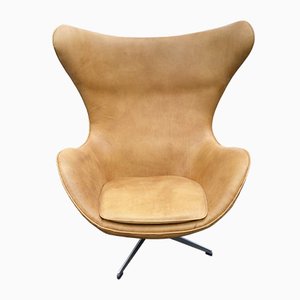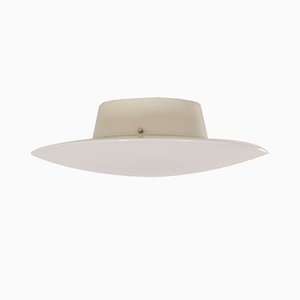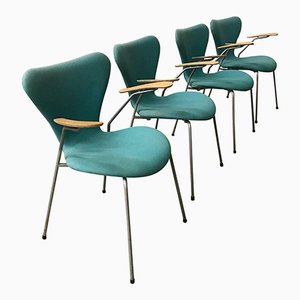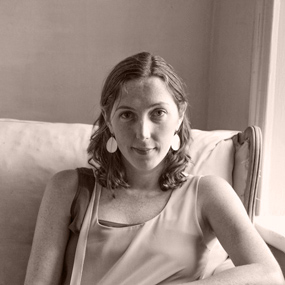Arne Jacobsen’s Jet-Age Royal Hotel Copenhagen
Up in the Air
Set against the backdrop of the Jet Age—a period that witnessed, among other events, Sputnik’s flight into space, the birth of NASA, and the introduction of the color TV (not to mention Elvis’s gyrations, courtesy of The Ed Sullivan Show)—the 1950s welcomed the rise of a new, globe-trotting tourist class, unlike any ever before it. Thanks to rapid, postwar growth in the commercial aviation industry and the introduction of aeronautic innovations such as the turbine engine, more and more people began to journey across the oceans. At the same time, a suite of services and spaces emerged, specifically designed to accommodate and appeal to these well-heeled travelers. And one of these projects in particular, Copenhagen’s SAS Royal Hotel, stood out from the rest—both as a physical symbol of a new era of unprecedented mobility and as an icon of international design.
In 1955, the Scandinavian Airlines System (a conglomerate of the Norwegian, Danish, and Swedish national airlines) commissioned famed Danish architect-designer Arne Jacobsen to create what would ultimately come to be called the world’s first design hotel. Jacobsen was at the height of his career, already widely celebrated for his contributions to modernist design in Denmark, and the project—though initially met with great controversy—would prove to be one of his masterworks.
Constructed between 1956 and 1960, the SAS Royal Hotel Copenhagen was the airline's first hotel. Set in the heart of the city, beside the Tivoli Gardens, the 22-story structure was Denmark’s largest hotel and the city’s first skyscraper—a reality that initially evoked much public debate. In fact, the very idea of a skyscraper was almost too much for some to take; on February 4, 1959, the national newspaper Politiken wrote: “Each day thousands of people stop up in Vesterbrogade, look up and think: ‘I hope it won’t fall down in a storm.’”
Instead, the SAS Royal Hotel stood proudly against the city’s skyline, in sum a perfect embodiment of Jacobsen’s signature combination of traditional Danish craftsmanship and modern functionalism. When it opened its doors on July 1, 1960, it was like no other hotel of that period. Jacobsen approached the hotel as a complete work of art—or a Gesamtkunstwerk—designing not only the structure itself but also all of its interiors, from floor to ceiling, and every chair, door handle, and piece of cutlery in between.
From the outside, the SAS Royal Hotel is all clean, straight lines, calling to mind other modernist icons of the era, such as New York City’s Seagram Building (Mies van der Rohe, 1958) and Lever House (Skidmore, Owings and Merrill, 1952). The SAS building is essentially composed of two large rectangles: The first lies flat at its base, parallel to the ground, while the other juts up high into the sky. The bottom piece was designed to host a car park and SAS’s first airport terminal (with a cocktail bar, or course), from which a shuttle service might deliver happy jetsetters to the nearby airport. The vertical portion houses the hotel’s 275 rooms and suites. Recognizing the building’s dominant position in Copenhagen’s relatively low cityscape, Jacobsen covered the façade in light grey and green aluminium and glass in order to reflect the surrounding sky and clouds. This solution—a combination of clever material choices and aesthetic sensitivity—may reflect Jacobsen’s earlier years; he had initially hoped to be a painter, and, as legend has it, as a child, he painted the coloured wallpaper in his bedroom white, in defiance of his parents’ tastes.
Jacobsen chose to juxtapose the exterior’s harsher, hypermodern lines with a collection of soft, organic forms within—a tension that served, ultimately, to elevate both extremes. In stark contrast to its more rigid exterior, for example, upon entering the hotel, guests found themselves inside an airy lobby whose main feature was a spiral staircase—one, notably, that was at the edge of what was technically achievable at the time. Throughout the hotel, Jacobsen found innovative ways to round off sharp, geometrical edges, embracing biomorphic shapes inspired by the natural world. The overall effect was harmonious, welcoming, and decidedly humanistic.
While Jacobsen was certainly not alone in his comprehensive approach, and most modernist designs of the 20th century were in fact created by architect-designers, Jacobsen’s work for the SAS Hotel is particularly remarkable for, among other elements, the number of world-renowned design pieces that emerged from it. Arguably the three greatest standouts—all of which may still be found in design-forward spaces across the globe today—are the designer’s Egg, Swan, and Drop chairs (all 1958). This trio dotted the hotel’s public spaces and guest rooms, every one boasting alluring, gentle curves, and, one might argue, quietly heralding the soon-to-follow space-age aesthetic, à la the ’60s-era works of Joe Colombo, Verner Panton, and Olivier Mourgue, to name just a few.
The elegantly exaggerated Egg Chair encircles its sitter in an almost cocoon-like fashion. The shapely arms of the Swan, meanwhile, call to mind the delicacy of its namesake’s wings. And the water-inspired Drop’s simple yet sweet silhouette at once supports and encourages freedom of movement. Both independently and together, they reinforce the spirit and cosmopolitan glamour of the time.
Since the 1960s, this historical design hotel has undergone significant changes, both in name and décor. In 1994, it became the Radisson SAS Royal Hotel; in 2009, it was dubbed the Radisson Blu Royal Hotel. Over the years, as it has come under new management, most of the interior has been completely renovated. Thankfully, however, Room 606 has been preserved and still reflects Jacobsen’s original design. In fact, one may rent the room and step back in time for the sum of 5,500 Danish Krone (or about €740) a night. When it’s not rented, the hotel also welcomes the curious up to the 6th floor to take a gander. And, like a moment frozen in time, the unforgettable space pays tribute to a period, a man, and a game-changing design.
Special thanks to the Radisson Blu Royal Hotel for their generosity with images and information!
-
Text by
-
Anna Carnick
Anna is Pamono’s Managing Editor. Her writing has appeared in several arts and culture publications, and she's edited over 20 books. Anna loves celebrating great artists, and seriously enjoys a good picnic.
-
More to Love
Cognac Aniline Leather Swan Chairs by Arne Jacobsen for Fritz Hansen, 1966, Set of 2

Cognac Leather Egg Chair by Arne Jacobsen for Fritz Hansen, 1960s

Eklipta Wall or Ceiling lamp by Arne Jacobsen for Louis Poulsen, 1950s

Vintage Model 3321 Swan Sofa by Arne Jacobsen for Fritz Hansen, 1960s

Leather 3316 Egg Chair by Arne Jacobsen for Fritz Hansen, 2001

Egg Chair by Arne Jacobsen for Fritz Hansen, 2006

Djob Desk by Arne Jacobsen by Arne Jacobsen, 1970s

Vintage Egg Chair with Footrest by Arne Jacobsen for Fritz Hansen

Turquoise Upholstered Model 3207 Butterfly Chairs by Arne Jacobsen, 1950s, Set of 4

Danish Dot Stool 3170 by Arne Jacobsen for Fritz Hansen, 1981


